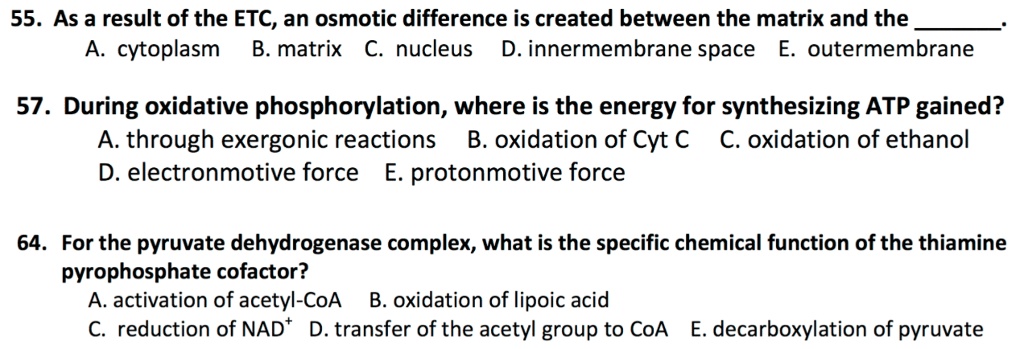BMB 401 Lecture Notes - Lecture 17: Flavin Adenine Dinucleotide, Thiamine Pyrophosphate, Citric Acid Cycle
Document Summary
Pyruvate comes in to the: it has five different coenzymes, thiamine pyrophosphate (tpp), Dihydrolipoyl dehydrogenase. lipoic acid, coa, flavin adenine dinucleotide (fad) and nicotinamide adenine dinucleotide (nad+) intermediate in the mitochondria from the cytoplasm and acetyl. Pdh complex (pyruvate dehydrogenase complex): it"s a complex that contains three enzymatic activities, which are, nad+ comes from the mitochondria. By calcium released during contraction in skeletal muscle. A tricarboxylic acid that have 6 carbons, which is. Ketoglutarate: alpha-ketoglutarate is a 5 carbon alpha-keto dicarboxylic acid. Adp: what regulates or inhibits the enzyme isocitrate dehydrogenase? ( a low-energy signal) and calcium. Fad (its coenzyme) is reduced to what when succinate. Alpha-ketoglutarate dehydrogenase complex. oxidative decarboxylation. second co2 and a second nadh for the cycle. products which are too much nadh and succinyl coa. Succinate dehydrogenase is the only enzyme of the tca cycle that is embedded where? in the inner mitochondrial membrane.


